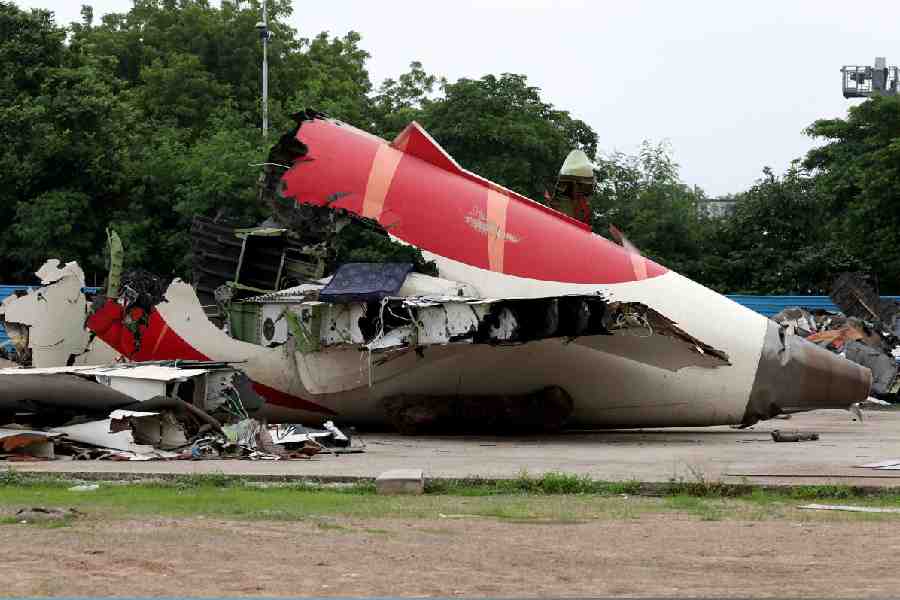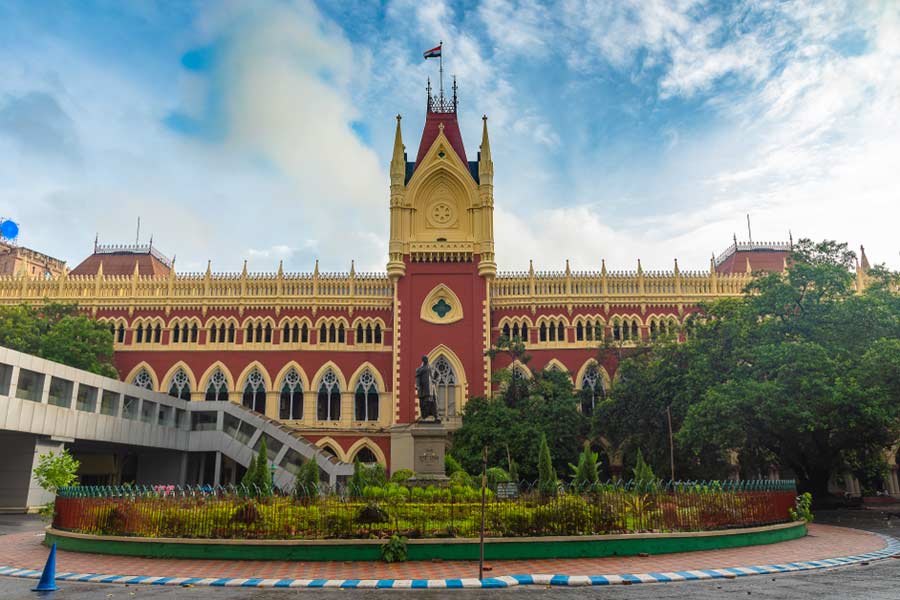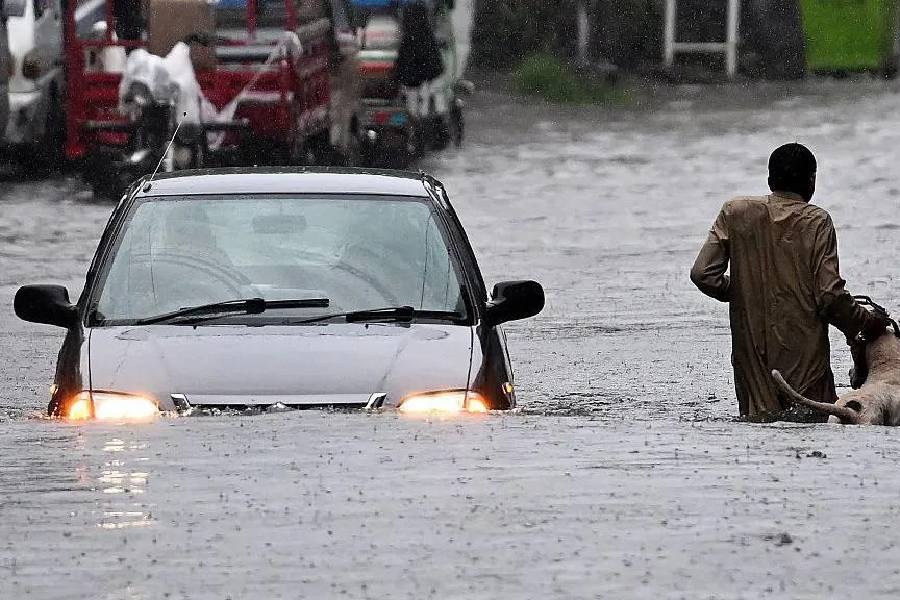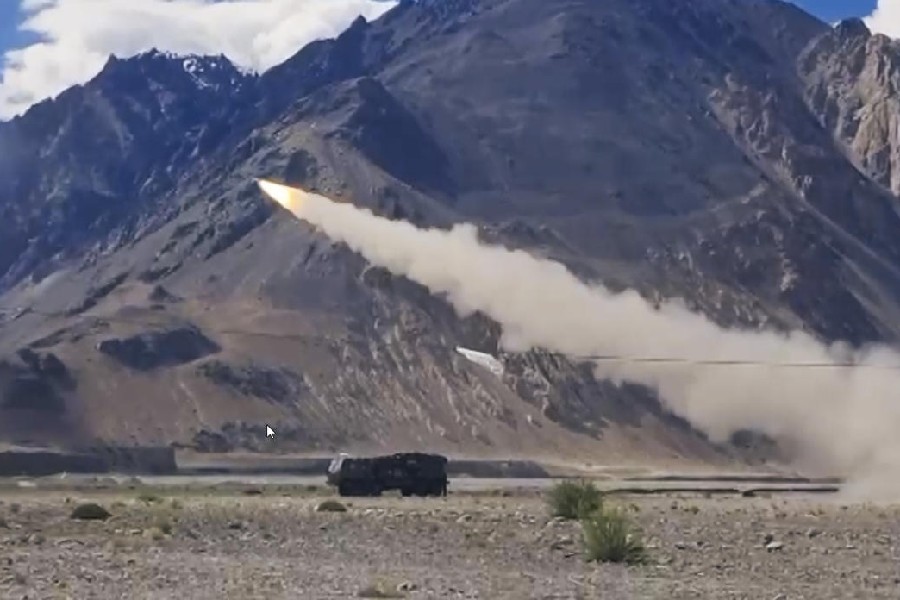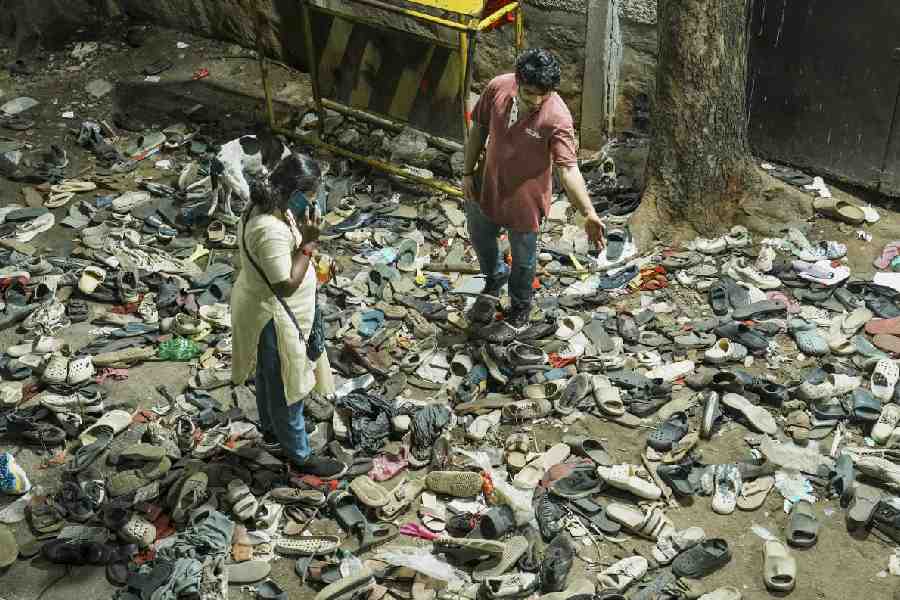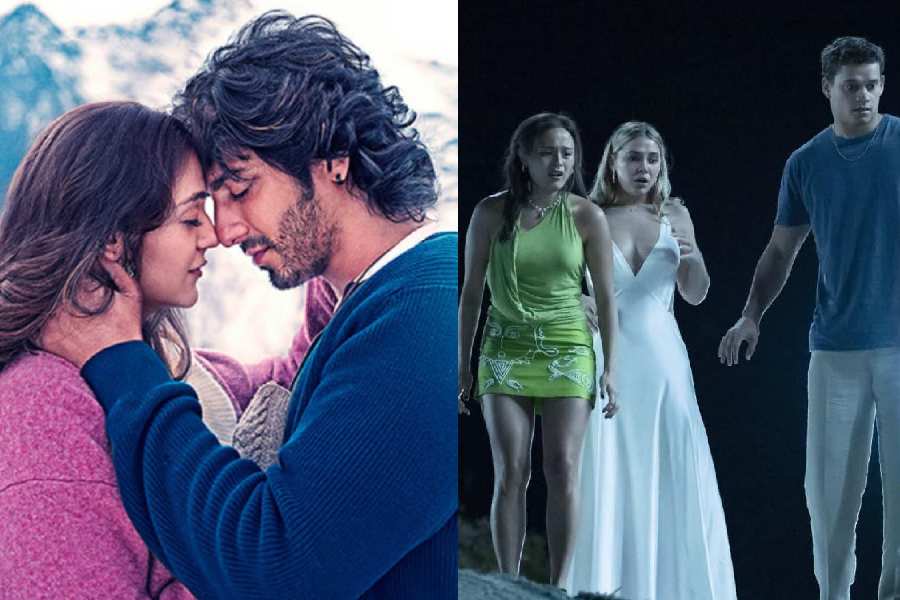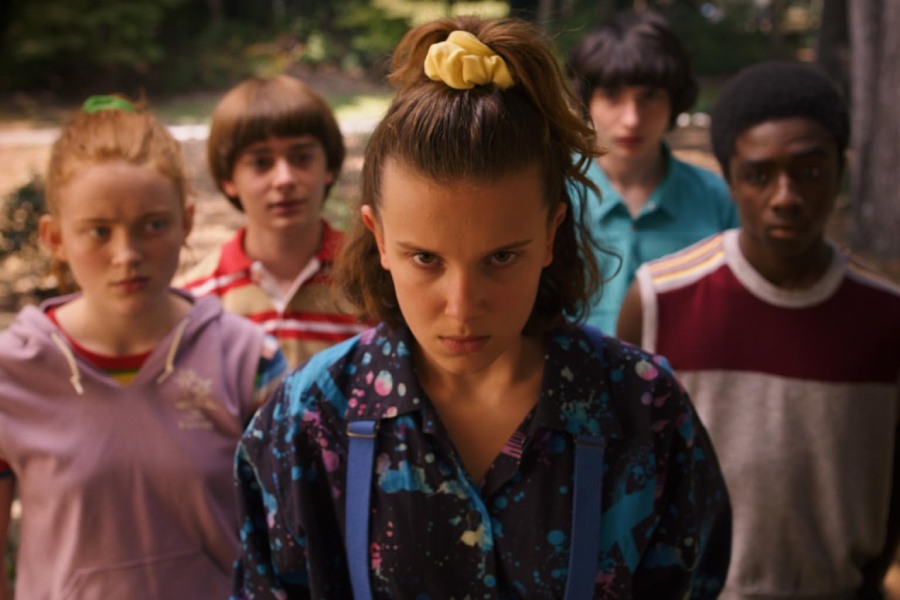 |
Rajukumar Chandrajitsana Singh, better known as RKCS, needs no introduction in the art world. In fact, he is the doyen of the Manipuri painting scene and a household name in the state. In his 65-year-long career as an artist, he has compiled a body of work that is mindboggling. Chandrajitsana has over 10,000 works of art to his credit, some of them adorning the walls of government buildings and private homes of eminent personalities both in India and abroad.
But this achievement, which is not a mean feat in itself, has not satisfied this small, soft-spoken artist. His dream is to own an art gallery, which can narrate the history of Manipur to visitors. And his long-cherished dream will become a reality when the RKCS Art Gallery opens early next month.
Construction of the proposed art gallery, which began five years ago, has been completed and finishing touches are being given for inauguration either in January or February next year. “This will be a premier private art gallery in Manipur,” his son R.K. Budhimanta Singh, who is also a painter, said.
A visit to his present gallery (all the rooms of his Keishampat residence have been converted into a sort of art gallery with his exhibits cramming all the rooms) will find the artist ready to talk about his works and his dreams. “I did not take rest even when our family was taking refuge in many places, including Nambol, during World War II,” he says, fondly recalling the early days of his career.
Chandrajitsana was born on October 13, 1924 at Keishampat, Imphal. He is the second son of R.K. Yumjaosana Singh, who was also a pioneering artist of Manipur. Chandrajitsana imbibed the creative genius of his father and his career as a painter began from his early schooldays. After establishing the RKCS Chitralaya in 1947, the year Manipur became a part of the Indian Union, he set another milestone when he introduced cinema poster painting in Manipur.
The artist is also associated with theatre. He was initiated into this field when he joined a theatre group called Cosmorama, Keishmathong, and got a small role in the play Khainaba (Separation). He also painted all the scenes of that play. He is a life member of the noted Manipur theatre group, Manipur Dramatic Union, since 1954 and was honoured with the title of the Best Stage Decorator of the All Manipur Drama Festival organised by the Theatre Centre, Manipur, in 1960.
But his flair lies in painting. His paintings — realistic art — are acclaimed far and wide. The collectors include AICC president Sonia Gandhi, former US ambassador to India Richard F. Celeste and former Japanese ambassador to India Eijiuo Noda. . Most of his works have found pride of place in New Delhi. He has organised exhibitions across the country, including Delhi, Calcutta and Chennai.
Chandrajitsana’s outstanding achievement, however, is the completion of a project depicting the history of Manipur in painting during the period beginning from Maharaja Garibaniwaz’s (1709) reign to Manipur’s merger with the Indian Union (1949). Altogether 72 oil paintings depict the important historical events of this period including Burmese invasion known as the “Seven years’ devastation” and World War II. More than one lakh Japanese soldiers were sent to Manipur during World War II to fight against the British army and half of them died fighting. Hence, for any visiting Japanese, a visit to his gallery is a highpoint.
The exhibition of these paintings at Imphal’s GM Hall in 1990, inaugurated by the then Governor, Chintamani Panigrahi, became an instant hit, attracting a huge crowd.
The exhibition was initially planned for seven days, with the sponsorship of the Manipur State Kala Akademi. But it had to be extended for another seven days on public demand. “I took 10 years to complete the project and I had to do a lot of research work with the help of scholars,” the artist recalls. Former Governor of Karnataka, Rama Devi, during her visit to the gallery collected two of RKCS’ works, besides donating Rs 5,000 for the new gallery.
This solo exhibition fetched him a national record and also a place in the Limca Book of Records. His son Budhimanta, who has been assisting his father for several years, says the main room of the proposed RKCS Art Gallery will display the historical paintings. The objective is to let visitors know the history of Manipur through visual narration during a short period of time.
“Whenever I travelled outside Manipur, I was asked where Manipur is. This question saddened me. Hence, I decided to do something to introduce Manipur through paintings and finally took the decision to work on historical events,” Chandrajitsana says.
Manipur is always the theme of his works. Be it Ras Lila, the famous dance form acclaimed throughout the world or paintings depicting way of life, Manipur is always there. He says, “My aim is to send paintings on Manipuri themes — as many as possible — in order to introduce the state to the outside world. I would like to promote Manipuri culture and keep its history alive. And I don’t paint for money.” And that is exactly what this 79-year-old artist is doing — and that too with success.
No dignitary’s visit to Imphal is complete without a visit to his home gallery. His popularity, in India and abroad, is evident by the long list of his visitors. Two Japanese broadcasting companies have also done documentaries on his works.
“The visit to your home (gallery) was the highpoint of my enjoyable and interesting stay in Manipur....” said John Zubrycki, the then first secretary, Australian high commission, during his visit in 1991. President A.P.J Abdul Kalam was presented a Ras Lila painting of RKCS by the Manipur government during his recent visit to Imphal. The missile man said he was “impressed” by RKCS’ works.
But the artist is not resting on his laurels. “I have a lot of things to do. I dream of restoring the lost culture of Manipur through paintings. For instance, the younger generation does not know that there was a time when a newly-married Meitei bride was sent off on the back of an elephant to her in-laws’ house. I dream of recording all such events for posterity.”
Age has taken its toll on Chandrajitsana.“I have done a lot, but the hunger to work on new themes is still there. However, my failing health does not permit me to work like before. My eyesight has also become weak,” the artist says. RKCS has many dreams. Opening the proposed gallery will fulfil only part of this untiring artist’s hopes.


